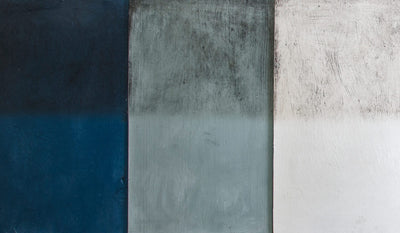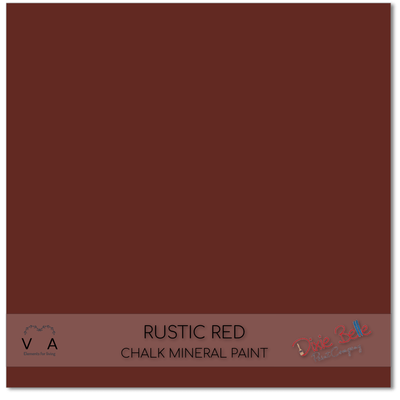How To Use Fusion Mineral Paint

HOW TO PAINT WITH FUSION MINERAL PAINT
Painting furniture, kitchen cabinets, exterior doors etc has never been easier!
Painting with Fusion Mineral Paint a professional paint with is built in top coat, is really enjoyable and easy to get a really great finish! Use our easy to follow process for how to use Fusion Mineral Paint and Fusion Products to add colour to your projects. A small project with a pot of mineral inspiration can easily be refinnished within a few hours.
Equipment You'll Need.
We recommend the following essential equipment and highlight optional products you might like.
- Your choice Fusion Mineral Paint colour.
- A paint brush (see our recommendations for best brushes and shape / size of brush)
- TSP cleaner
- Sandpaper (240 grit and 320 grit or above)
- Protection for your floor or working area (a large piece of cardboard is ideal.
Optional Extras
- Fusion Ultra Grip (necessary for shiny non-porous surfaces)
- A roller (micro fibre)
- Painters tape (we recommend Frog Tape, low tack)
- Scrubby Soap (lovely for cleaning brushes, hands and paint spills.
- Fusion Tough Coat (if you need extra durability)
- White Spirit (if you need to remove wax)

STEP ONE
Assessing your project- before diving in with your Fusion Mineral Paint. Have a good look at your item and ask:
Is the surface
-
-
bare wood?
-
MDF?
-
Laminate?
-
Melamine?
-
Varnished?
-
Lacquered?
-
Previously Painted?
-
Waxed?
-
Oiled?
-
Stained?
-
-
-
Does it have
-
A deep grain?
-
Damage?
-
Water marks?
-
An offensive smell?
-
-
Are you going to change the hardware?
STEP TWO
Remove all hardware where possible.
For kitchens it is easier to remove all doors so that you can work on a flat surface.
For some furniture it is easier to remove doors, shelves, drawers etc.
STEP THREE
Clean! For all surfaces other than bare wood or MDF, we recommend washing down with a diluted solutions of Fusion TSP or sugar soap to remove dirt, grime, and grease and 'open' up the surface to be painted so that it is more receptive to the paint.
Whilst doing this continue assessing your project with the above questions as you may find unexpected issues. You may see a yellowish brown residue constantly appearing on the cloth. This could be an indication of nicotine staining. Or a deep reddish brown, maybe mahogany. Remember to rinse thoroughly.
For bare wood or MDF you just need to wipe over carefully with a cloth dampened with your above solution as too much water on these surfaces will seep in and either raise the grain or in the case of MDF cause it to swell.
BADLY PEELING PAINT USE A PAINT STRIPPER FIRST - CONTINUE WITH STEPS FOR BARE WOOD
WAXED - REMOVE WITH WHITE SPIRIT AND BLUNT BLADE - CONTINUE WITH STEPS BARE WOOD
STEP FOUR
Any damage needs to be dealt with now and if you are replacing hardware you may want to fill existing holes. For deep scratches and broken veneer etc it is easier to leave these at this time and deal with these once you have applied a base coat as it is much easier to assess what needs filling at that stage.
STEP FIVE
The next step greatly depends on the surface you are dealing with.
OPTION A
Sealing, Stain Blocking & Odour Blocking
For bare wood and MDF and anything that is likely to cause staining or has a nasty odour, it is advisable to seal it first, this is to prevent over-saturation of a porous surface and this will also help with knots and natural stain present in some woods. For this we use Dixie Belle Boss which comes in white, Grey or clear. If you are going to paint in a light colour then use the white or grey boss as this will really help with your coverage when it comes to the painting. For dark colours use the grey or clear, the clear is also useful on items that you are wanting to distress afterwards. The best way to apply this product is with a good quality synthetic brush. Apply 2 coats and leave to dry over night. You can wash your brush out with warm water and if required a little Brush Soap or try one of our Scrubby Soaps
OPTION B
For surfaces that are shiny, i.e glass, metal, laminate, melamine, lacquered, varnished or gloss painted.
Scuffle sand all over using 240 grit sandpaper to create a key. There may be some surface that are too ornate to sand and for those surfaces skip this step. Wipe over with lint free cloth to remove all traces of sanding.
Then apply Fusion Ultra Grip, which is an adhesion primer, with a good quality synthetic brush. Paint carefully and with the grain, and finish off (laying off) with long strokes from one end to the other or if applicable top to bottom to remove all broken brush marks. For larger areas do this in strips of three of four brush widths because if you try and paint the whole surface in one go the product will start to go tacky before you can lay off. Leave to dry overnight.
OPTION C
Previously Painted eggshell, chalk paint (unwaxed) paints that are matte, worn out varnish - Remove any loose or flaking paint a blunt blade/ scraper is good for this. Then wash down again with your previously used cleaning solution, or if necessary prepare some more, sand lightly with 240 grade sand paper to provide a key, then wash your item down with your cleaning solution.
STEP SIX
Fill any holes, large scratches, missing veneer now, you can use the Dixie Belle Mud for this, it is available in white, black and brown, depending on your colour of paint. Leave to dry several hours, preferably overnight.
STEP SEVEN
Apply your chosen colour of Fusion Mineral Paint. Do not over apply. Use a good quality synthetic brush, Always choose a brush that is large enough for the job! This will really help achieve a brushless finish. We really recommend you use the fine continuous mist spray bottle filled with water and this really helps with the application (use sparingly), just spray a little onto your brush and the surface as you go, it really helps to spread the paint evenly and to get it on really flat.
Brush your paint on in nice even strokes, not too thickly. Work methodically over the item and always brush with the grain, remembering to finish off with with full lengths or widths of the brush to remove stop start brush marks. Let the first coat dry it can take anywhere between 20 mins to an hour. It is best to work inside at room temperature, cold, damp conditions will increase the drying time considerably. Once dry apply a second coat in the same manner and leave to dry thoroughly. It is always to better to apply several thins coats rather than thick if you are wanting a smooth even finish. In between coats to keep your paint brush from drying out, place in water. Wash your brushes in luke warm water and occasionally use a brush soap / conditioner to keep the bristles soft.
Pro-Tips
Most pieces will take one to two coats for full coverage. Sometimes, after the first coat dries it will look blotchy. Don't panic! After the second coat, it will be beautiful! We always recommend applying 2 coats of paint to benefit from optimum durability.
Sometimes you will see brushstrokes, don't worry, as the paint dries, they will disappear. Fusion Mineral Paint is great for self levelling.
STEP EIGHT
A GREAT FINISH!
If you want to distress your item, now is the time to do it. Use 240 grade sand paper to distress the edges and 320 to 400 grade to even out the finish if necessary. If you distress a little too much for your taste just paint right over that area and start again!
Fusion Mineral Paint has a built in top coat and for most projects does not need a finish. Although you can apply finish if you want extra protection! Take a look at Fusion Tough Coat and Fusion Wax.
We hope these quick tips have given you the confidence and inspiration you need to tackle your next project and paint it beautiful!



